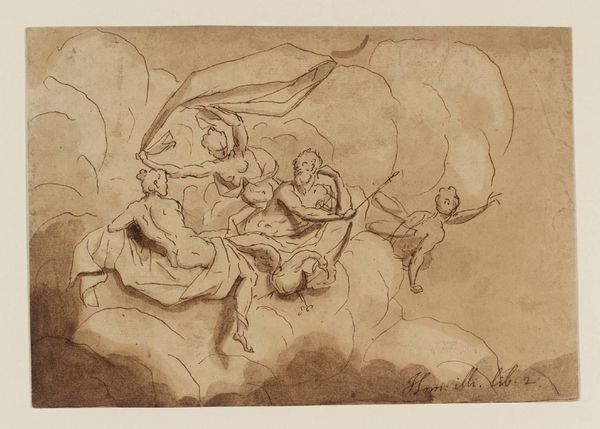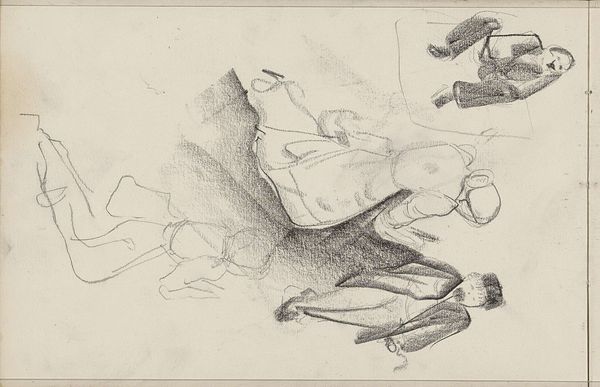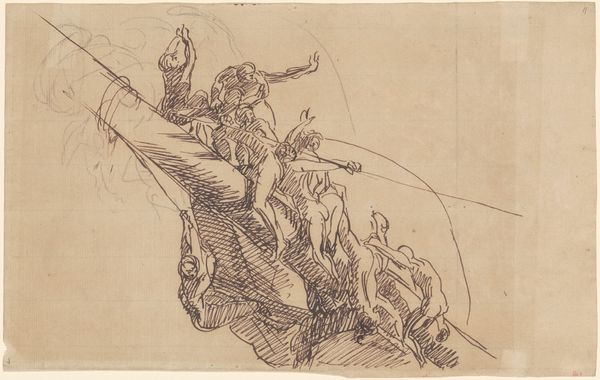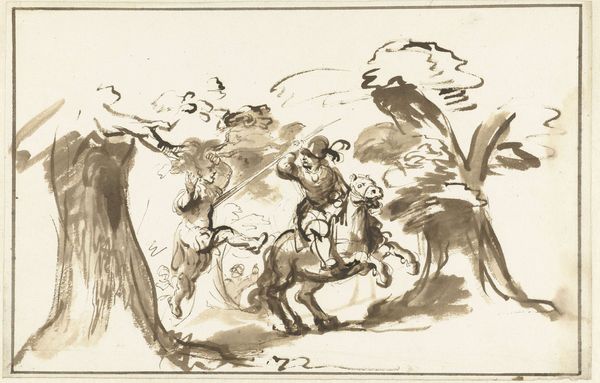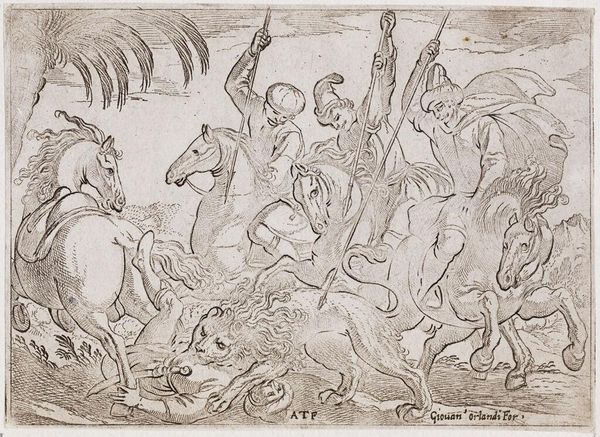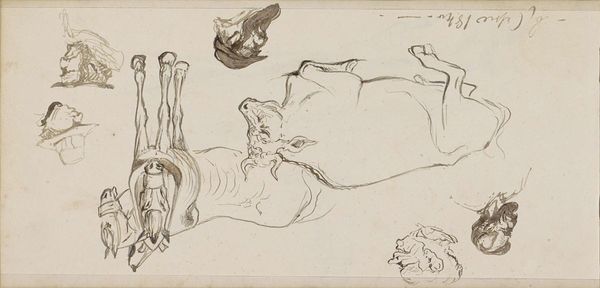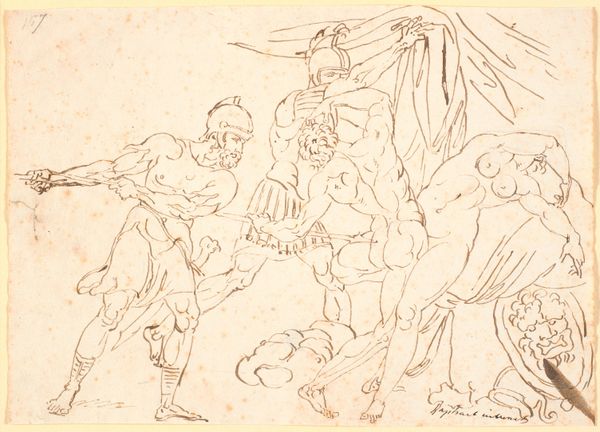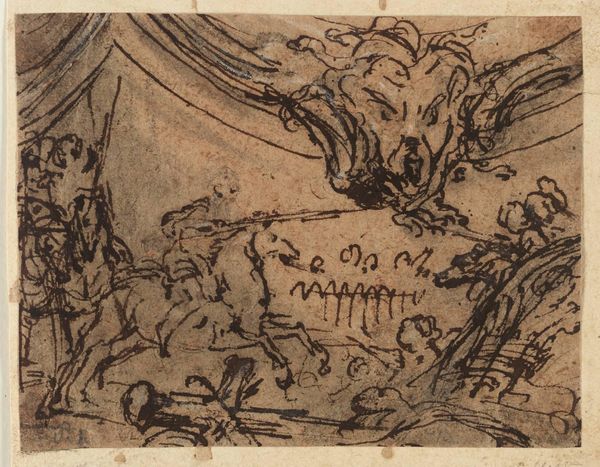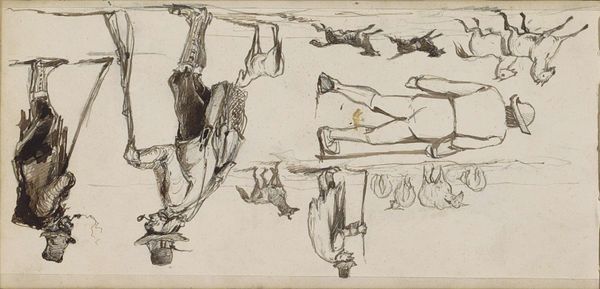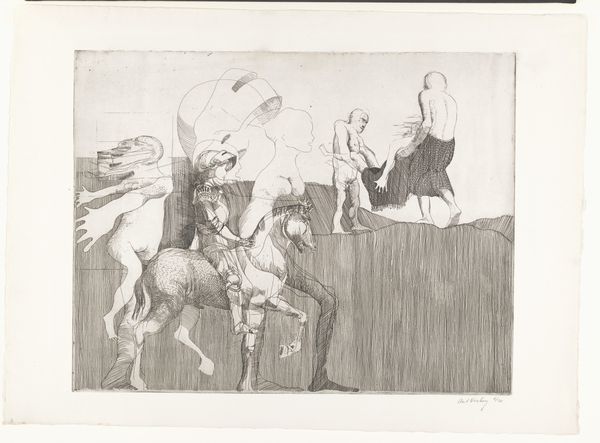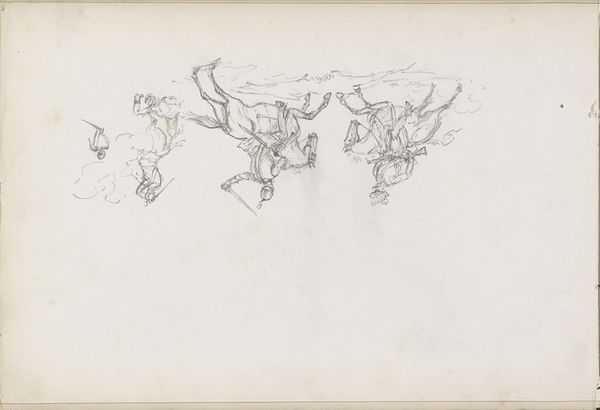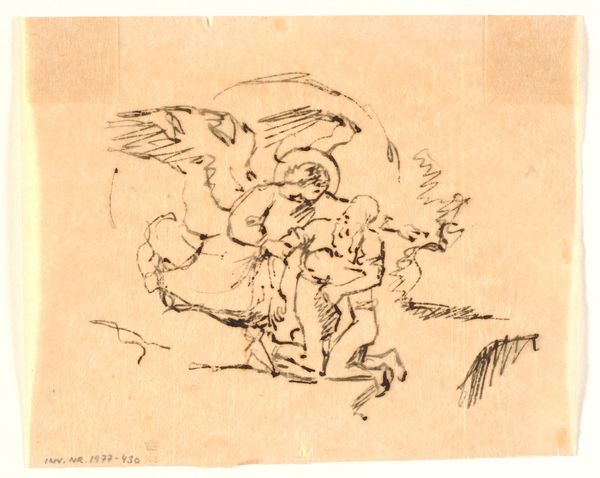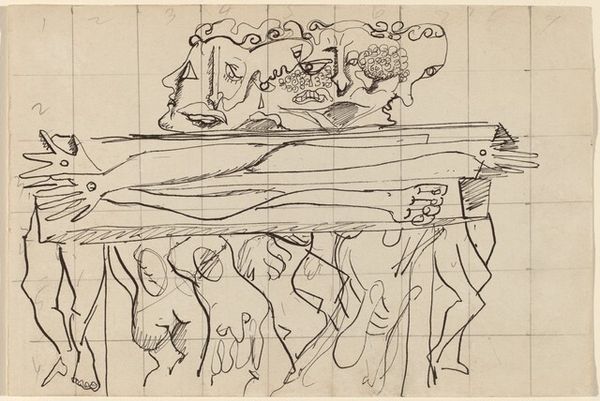
drawing, ink
#
drawing
#
pen sketch
#
landscape
#
figuration
#
ink
#
horse
#
realism
Copyright: Rijks Museum: Open Domain
Curator: Let's delve into this fascinating pen and ink drawing, “Jagers, ruiters, paarden en mannenkoppen,” which translates to “Hunters, Riders, Horses, and Men's Heads,” attributed to Johannes Tavenraat and believed to have been created sometime between 1840 and 1868. It is currently housed here at the Rijksmuseum. Editor: Well, it's… chaotic. The figures feel scattered, almost like fragments of a dream. The overlapping horses and men are very evocative of war, struggle, or perhaps even just the energetic preparations for a hunt. Curator: Indeed. From a material perspective, observe the skillful use of ink washes to create depth and volume. The quick, confident strokes speak to a well-practiced hand and efficient labor. These are preparatory sketches; Tavenraat clearly experimented to understand movement and form. Consider what type of paper the artist chose and why. Editor: Absolutely. And those heads clustered at the bottom, almost like a collection of trophies or memories...The starkness reminds me of classical bust arrangements and memento mori symbolism of past times. Each visage, despite the simplicity of the lines, seems to possess a unique story etched on its face. Curator: The relationship between representation and consumption here is key. These images reflect, then contribute to a broader visual culture about equestrianism, social hierarchy and, more widely, landscape and place. Did the intended consumers desire realism? Are these images trying to meet this expectation? What stories do they tell about our human relationship with animals? Editor: That's a very pertinent point about visual culture. What strikes me as intriguing is the almost frantic energy—as though Tavenraat sought to capture not merely the image of a horse or a rider but the very spirit of movement, an almost restless need. Even with the incomplete, disjointed nature of the image, it somehow delivers an enduring statement. Curator: I would agree. I've focused my analysis on how Tavenraat makes efficient use of his raw materials to produce something both practically and visually impactful. These men and horses and their placement represent Dutch attitudes during this period, toward landscape and leisure. Editor: I would just offer as a parting reflection that, regardless of period context or the intentions of the artist during creation, this image persists in sparking an active interpretation about the symbolism of horse and human and what they mutually come to represent, which varies from viewer to viewer.
Comments
No comments
Be the first to comment and join the conversation on the ultimate creative platform.
